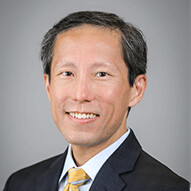Pediatric brachial plexus birth injuries
The Brachial Plexus and Peripheral Nerve Program at Children's Health℠ is the only one in the region offering comprehensive care for children with brachial plexus (bran·chi·al plex·us) nerve injuries. We specialize in complex nerve surgeries, physical rehabilitation and occupational therapy for newborns through age 18. With our team approach, we bring together experts in physical medicine and rehabilitation, hand surgery and occupational therapy to meet all of your child’s needs.
What are pediatric brachial plexus birth injuries?
Brachial plexus injuries may happen to infants during childbirth or to older children in an accident. These injuries affect the brachial plexus nerves, which provide movement and feeling to your child’s shoulder, arm and hand. This network of nerves starts at the spinal cord in the neck and travels down each shoulder and arm to the hands. Pediatric brachial plexus birth injuries occur when these nerves stretch or tear. The injury typically only affects one side of a child’s body.
Children with brachial plexus nerve injuries may not be able to move or feel the injured hand, arm or shoulder. Other names for brachial plexus nerve injuries include brachial plexus palsy and Erb’s palsy (Duchenne-Erb palsy).
What are the different types of pediatric brachial plexus birth injuries?
Stretched brachial plexus nerve (neuropraxia)
This injury occurs when the nerve stretches, causing swelling. The damaged nerve can’t send signals to the brain to help move the shoulder, arm or hand. The inflammation also affects your child’s ability to feel sensations with their injured hand and arm.
Children with a stretch injury (neuropraxia) eventually regain limb movement and sensation after the swelling goes away, which may take up to three months. During this time, your child receives occupational therapy through our Pediatric Hand Therapy Program.
Ruptured (torn) brachial plexus nerve
A rupture is a partial or complete tear within a brachial plexus nerve. As the swelling subsides during your child’s first four months of life, you’ll notice some movement returning to the injured limb. It can take 12 to 18 months for the nerve to mostly recover and regenerate. However, it’s rare for a nerve to fully recover from this type of injury.
During this time, our occupational therapists (OT) perform exercises to keep your child’s unused muscles and joints from stiffening. We show you how to do these stretching and strengthening exercises at home. If there’s no noticeable improvement in limb movement or sensation by the time your child is 4 months old, we perform surgery to repair the injured nerves.
Avulsion brachial plexus nerve
Avulsion is the result of the root of the brachial plexus nerve tearing away from the spinal cord. If there’s no noticeable improvement in limb movement or sensation by the time your child is four months old, we perform surgery to repair the tear.
What are the signs and symptoms of pediatric brachial plexus birth injuries?
Brachial plexus nerve injury symptoms are noticeable soon after birth.
A newborn may have:
Limp arm (floppiness)
No muscle control in the arm, hand or wrist
No sensation in the arm or hand
Paralyzed limb (no movement)
How are pediatric brachial plexus birth injuries diagnosed?
X-rays - Your pediatrician may diagnose a brachial plexus birth injury based on symptoms and order an X-ray to check for a collarbone fracture. These diagnostic steps often take place before you and your baby leave the hospital. Fractures sometimes occur along with nerve injuries and require treatment such as a sling.
Follow-up care - After diagnosis, your pediatrician may refer your family to Children’s Health for ongoing care. Pediatricians throughout the region refer families to us for our expertise in helping children with brachial plexus nerve injuries regain limb function.
What causes pediatric brachial plexus birth injuries?
Traction on the nerves during childbirth causes brachial plexus birth injuries. A brachial plexus nerve injury is more likely to occur when a baby’s shoulders become stuck behind the mother’s pubic bones after the baby’s head comes out during a vaginal delivery. This problem is known as shoulder dystocia. The uterine contractions squeeze the shoulders. The pressure on the brachial plexus nerves can cause stretching or tearing.
How are pediatric brachial plexus birth injuries treated?
We use a team approach to help children with brachial plexus nerve injuries recover arm and hand function.
Our comprehensive treatments include:
Observation - Our physical medicine and rehabilitation doctors closely monitor your child’s progress to ensure proper healing of the damaged brachial plexus nerves. Stretched or torn nerves often heal within four to 18 months with therapy.
Occupational therapy (OT) - Our occupational therapists are certified in pediatric hand therapy. They use stretching exercises to improve range of motion while nerves heal. These exercises strengthen muscles and joints so they’re ready to use when nerve function returns to normal. Our team teaches you how to perform these exercises at home.
Botulinum toxin injections - When needed, we inject botulinum toxin A (more commonly known as Botox®) into shoulder muscles. The injections relax tight muscles, allowing us to place the shoulder into the correct position while nerves heal. The relaxed muscles make it easier to perform stretching exercises that improve range of motion.
Surgery - Children with severe brachial plexus injuries, such as an avulsion, need surgery to repair the damaged nerve. Our hand surgeons specialize in highly complex nerve repair, joint surgeries, and nerve, tendon and muscle transfers.
Pediatric brachial plexus birth injuries doctors and providers
We bring together experts in physical and rehabilitation medicine, hand surgery and occupational therapy to create a customized treatment plan for your child’s unique needs.
 Jonathan Cheng, MDPediatric Hand Surgeon
Jonathan Cheng, MDPediatric Hand Surgeon Jennifer Kargel, MDPediatric Hand Surgeon
Jennifer Kargel, MDPediatric Hand Surgeon Savannah Brown, PA-CPhysician Assistant - Plastic Surgery
Savannah Brown, PA-CPhysician Assistant - Plastic Surgery Jessica Grant, PA-CPhysician Assistant - Plastic Surgery
Jessica Grant, PA-CPhysician Assistant - Plastic Surgery Laura Hanna, PA-CPhysician Assistant - Plastic Surgery
Laura Hanna, PA-CPhysician Assistant - Plastic Surgery Kimly Nguyen, PA-CPhysician Assistant - Plastic Surgery
Kimly Nguyen, PA-CPhysician Assistant - Plastic Surgery Riley Powers, PA-CPhysician Assistant - Plastic Surgery
Riley Powers, PA-CPhysician Assistant - Plastic Surgery Elizabeth Wetz, PA-CPhysician Assistant - Plastic Surgery
Elizabeth Wetz, PA-CPhysician Assistant - Plastic Surgery